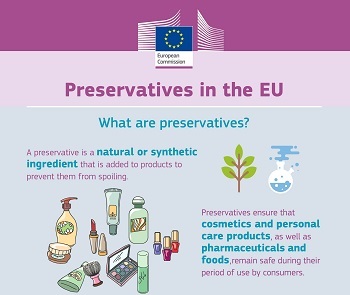Consumer safety is the overriding objective for the manufacture and sale of cosmetic and personal care products in Europe - and the foremost responsibility for product safety lies with industry.
The EU Cosmetics Regulation governs how cosmetics and personal care products are made and placed on the market. It is the most comprehensive set of laws for our industry in the world, requiring cosmetics to be safe for human health when applied under normal or reasonably foreseeable conditions of use.
Experts from Cosmetics Europe, its members and other stakeholders work together on numerous projects and initiatives aimed at improving and enhancing the knowledge about ingredients, manufacturing processes and the science behind cosmetic products. Read more about our science-driven research projects
Working with other stakeholders is essential to our work. Cosmetics Europe is recognised as an expert stakeholder by the scientific community, European institutions and other relevant authorities, and we are involved in a range of European Commission working groups and often represent industry at industry conferences. You can explore our scientific publications, guidance documents, policy opinions and recommendations in our library.
Risk-based safety assessment
Safety assessments of cosmetic ingredients and products are based on evaluations of the risk they pose. Risk is defined as the probability of harm in relation to dose and exposure. Hazard based safety assessment looks only at the potential to cause injury, but with no relation to dose or exposure. Read more about hazard vs risk in our chapter on safety in products.
The risk assessment process has three stages: hazard identification, dose-response and exposure assessment. Based on the relationship between dose and incidence, and severity of the adverse health effect, risk characterisation and management is determined.
According to the EU Cosmetics Regulation, this risk-based safety evaluation of cosmetics products is the joint responsibility of the European Commission and industry.
On the European Commission side, a set of annexes lists the ingredients that potentially could cause damage to human health across forbidden substances and restricted substances. The Scientific Committee on Consumer Safety (SCCS), is a group of independent experts that can be mandated by the European Commission to provide scientific advice, evaluate substances and produce a written safety evaluation so that a decision can be taken by the team responsible for consumer protection at DG Grow on whether to propose regulatory change.
On the industry side, manufacturers are required to produce a product information file (PIF), which is a unique dossier per product, covering two elements: safety and efficacy. A highly qualified safety assessor* adjudges the safety component. The safety assessor is then responsible for producing a written safety evaluation.
For details on risk assessment of cosmetic ingredients, as laid out by the EU Cosmetics Regulation, please refer to the SCCS notes of guidance for the testing of cosmetic ingredients.
For a summary of the safety assessment procedure, see our chapter on safety in products.
*Information for safety assessors, including details on trainings and seminars, can be found on the DGK/IKW website.
Risk evaluation guidelines and tools
Our industry uses a number of tools to evaluate the risk of ingredients and products, before they have entered the market, as well as once they are already made available to consumers, including:
We constantly work with other organisations, including the SCCS, in order to develop new tools and methods for evaluating risk.
Further activities
Voluntary actions
Cosmetics Europe and the cosmetics industry have initiated a number of voluntary initiatives. View leading voluntary actions to learn more about:
- Our activity aimed at guaranteeing responsible advertising in our industry
- Initiatives that promote sustainable development
- Voluntary action on specific ingredients like Methylisothiazolinone (MIT) and micro plastics
Hair colorants
To raise awareness of the specific allergy risks posed by hair colorants, including details on how to colour safely and get the most out of hair colouration, industry experts have collaborated to provide an information website called ‘Colour Well, Colour Wise’.



